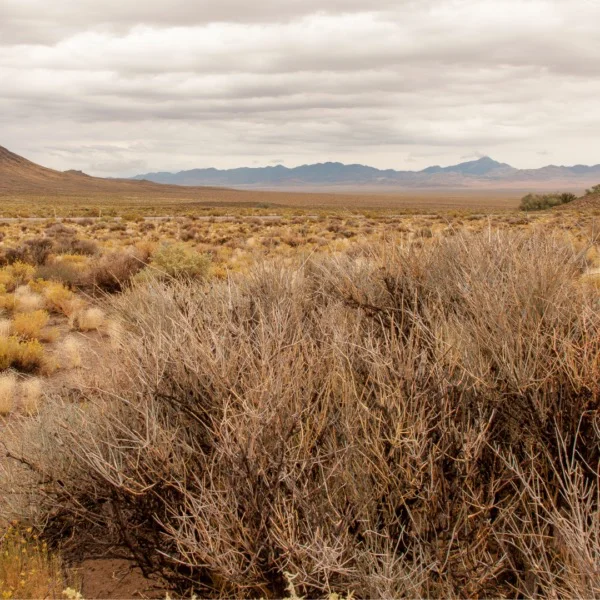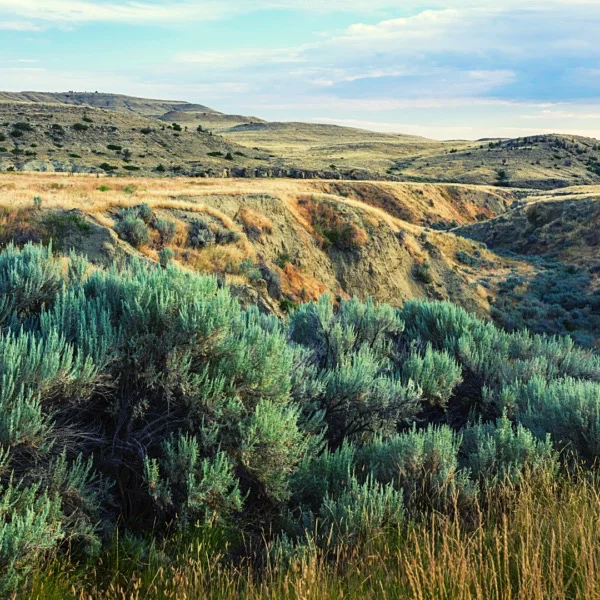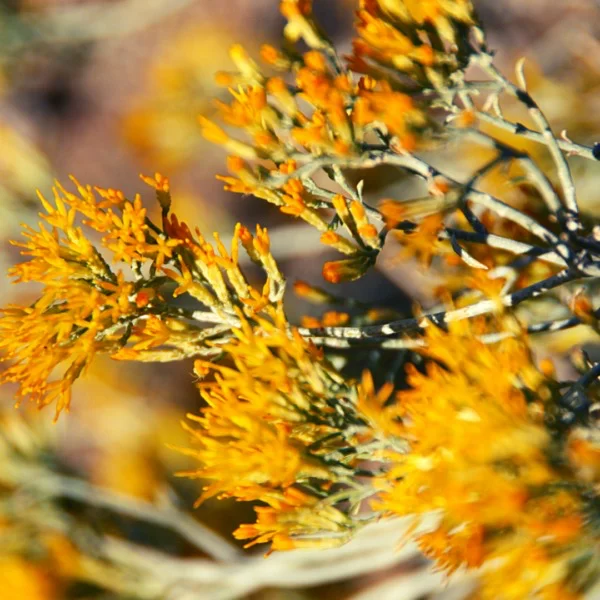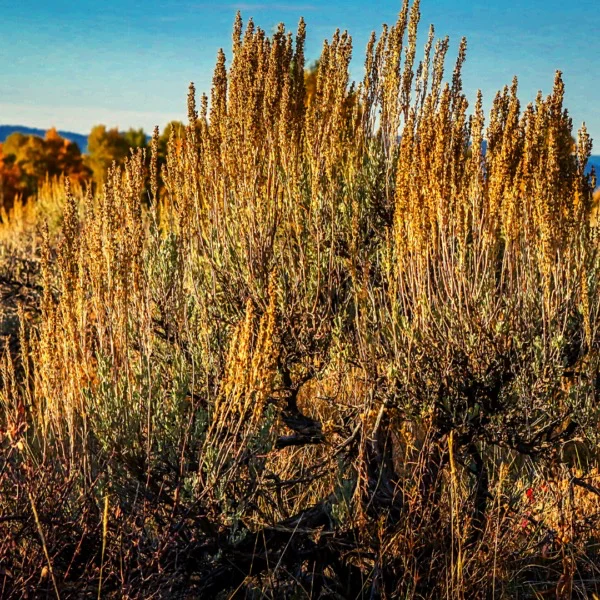Shrub-steppe: Sagebrush
There are some plants or animals that would really be missed if they were removed from their communities. We call these “keystone” species because, like the keystone at the top of a stone arch, they allow many other parts of the community to remain in balance. Sagebrush, the scrubby bush found across the arid American West, is one such living thing. Throughout the Columbia Basin, where the Hanford Reach National Monument is located, Big Sagebrush (Artemesia tridentata) is the dominant species of sagebrush. Growing up to nine feet tall and living over a century, its spreading, twisted branches grow slowly through the seasons.
Here in the shrub-steppe, average annual precipitation is between five and ten inches, not enough to support trees, so shrubs like sagebrush, bitterbrush, and rabbitbrush fill that role in the community. Songbirds nest in their woody branches, and ground-dwelling birds such as greater sage grouse nest and take cover below them. Though a few of these shrubs retain their leaves through the winter, providing forage for herbivores such as mule deer, elk, and jackrabbits, Washington’s nickname “The Evergreen State” doesn’t properly match the foliage in this arid ecosystem. Spring brings a flush of green with new growth, but through summer, autumn, and winter the dominant colors are brown and pale, grayish-green. Light colors reflect the sunlight to reduce moisture loss, and you’ll see many plants utilize this adaptation, along with small leaf size and a fuzzy leaf surface. Despite its pungent smell, sagebrush leaves are an important food for sage grouse and endangered pygmy rabbits, especially through the winter. The shade of large sagebrush provides protection for grasses and flowering plants from the wind and sun. Hundreds of species have significant connections to sagebrush, and some are sagebrush-obligate, requiring this plant in their habitat.
Protecting lands such as the Hanford Reach National Monument is the first step to preserving this important shrub and the other living things that depend on it. Controlling invasive species is the ongoing work that will maintain the balance this keystone supports.
Next Generation Science Standards
K-LS 1-1: Use observations to describe patterns of what plants and animals (including humans) need to survive
K-ESS 2-1: Use and share observations of local weather conditions to describe patterns over time
K-ESS 3-1: Use a model to represent the relationship between the needs of different plants and animals (including humans) and the places they live
2-LS 4-1: Make observations of plants and animals to compare the diversity of life in different habitats
3-LS 3-2: Use evidence to support the explanation that traits can be influenced by the environment
3-LS 4-3: Construct an argument with evidence that in a particular habitat some organisms can survive well, some survive less well, and some cannot survive at all
4-LS 1-1: Construct an argument that plants and animals have internal and external structures that function to support survival, growth, behavior, and reproduction
5-LS 1-1: Support an argument that plants get the materials they need for growth chiefly from air and water
Washington State Social Studies Learning Standards
G2.K.2 Identify natural events or physical features such as air, water, land, or wind.
G2.1.4 Identify natural events or physical features.
G2.2.1 Identify some common and unique cultural and environmental characteristics of specific places.
SSS1.4.1 Identify the concepts used in documents and sources.
SSS1.4.2 Evaluate primary and secondary sources.
SSS2.4.2 Identify the main ideas from a variety of print and non-print texts.





